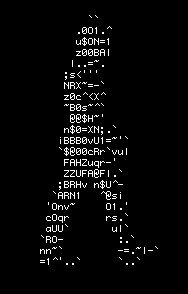Description
Server-Side Request Forgery (SSRF) is a vulnerability that enables attackers to trick a server into making requests to unintended locations, both internal and external, by manipulating URLs in user-supplied input. This can lead to unauthorized access to internal services, sensitive information disclosure, or even full system compromise. SSRF typically occurs when applications fetch external resources or perform HTTP requests based on unvalidated user input, allowing attackers to manipulate these requests and access restricted networks, APIs, or internal systems.
Exploitation
This web application is a Halloween-themed invitation card that displays an interactive party invitation with spooky effects, including animated bats, flickering text, and a jumpscare button that triggers a sound and an overlay. It uses PHP to load external content, with a dynamic background and various animations to enhance the Halloween ambiance.
Code analysis
In the provided code, user input is indirectly used to fetch external content for display within the application. Specifically, this line decodes a base64-encoded URL :
$url = base64_decode("");
This decoded URL is then parsed with parse_url() and validated to ensure it uses only the http or https schemes:
$parsed_url = parse_url($url);
if ($parsed_url['scheme'] === 'http' || $parsed_url['scheme'] === 'https') {
echo file_get_contents($url);
}
However, while the initial URL is hardcoded, this section of the code appears vulnerable if the $url variable were derived from dynamic user input. In that case, an attacker could potentially manipulate this input to exploit the file_get_contents() function, leading to SSRF or information disclosure if they control or alter the URL content.
POC
The issue arises when the URL passed into parse_url is manipulated, leading to a successful Local File Read (LFR) exploit. Specifically, the malformed URL http:\\test/../../tmp/flag.txt bypasses the parse_url scheme validation, and the malicious path is resolved to read sensitive local files, such as flag.txt in this case.
Exploit Explanation
The attacker sends a specially crafted URL to a vulnerable PHP script. The malformed URL, http:\\test/../../tmp/flag.txt, contains double backslashes (\\), which PHP’s parse_url function mishandles by interpreting it as a valid http URL scheme and misparsing the rest as a file path.
The crafted URL causes parse_url() to incorrectly parse the path as a local file path, which can then be read using file_get_contents(). The URL essentially tricks the system into treating a local file path as an HTTP resource, allowing an attacker to access restricted files on the server.
Payload
Payload: http:\\test/../../tmp/flag.txt
This payload exploits the parse_url and file_get_contents() behavior, where the path is not correctly validated.
<?php
$url = "http:\\test/../../tmp/flag.txt"; // Malformed URL payload
$parsed_url = parse_url($url);
if ($parsed_url['scheme'] === 'http' || $parsed_url['scheme'] === 'https') {
die(file_get_contents($url));
}
?>
Retrieving the Flag :
FLAG{Sp0oKy_Sc4ry_Y3sW3H4ck!}
How it Works
-
Malformed URL:
http:\\test/../../tmp/flag.txt- The double backslashes (\\) in the URL bypass the usual checks and are interpreted as a valid HTTP scheme. -
parse_url()Behavior:- Expected parsing: In a normal URL (
http://localhost/../../etc/passwd),parse_url()would return an array withscheme,host, andpath. - Malicious parsing: When the URL
http:\\test/../../tmp/flag.txtis passed,parse_url()still identifies thehttpscheme but interprets the malformed path as\test/../../tmp/flag.txt—a local path.
- Expected parsing: In a normal URL (
-
file_get_contents()Behavior:- The URL is passed into
file_get_contents(), which attempts to read the contents ofhttp:\\test/../../tmp/flag.txt. - PHP doesn’t detect this as a local file path and proceeds to open the file, allowing an attacker to read files on the local filesystem, such as
flag.txt
- The URL is passed into
RISK
- Sensitive Data Exposure: SSRF can allow attackers to send unauthorized requests to internal services, potentially leaking sensitive data or information from the internal network.
- Local File Read: It may enable attackers to access local files on the server, exposing critical configuration or password files.
- Bypassing Firewalls: Attackers can exploit SSRF to bypass firewalls, network segmentation, or other security measures.
- Denial of Service (DoS): SSRF can lead to server overloads or trigger unintended system behaviors, causing a DoS.
- Internal System Exploitation: It can be used to interact with internal services (e.g., databases, APIs) and exploit vulnerabilities for further compromise.
REMEDIATION
To remediate this vulnerability, ensure that all user-supplied URLs are properly sanitized and validated before use. Implement strict checks for allowed schemes (HTTP/HTTPS) and restrict file paths from being processed by functions like file_get_contents(). Use PHP’s built-in functions like realpath() to resolve paths and prevent traversal attacks. Apply input filtering to reject any URLs with invalid or suspicious characters like backslashes. Additionally, employ security mechanisms like web application firewalls (WAF) to monitor and block malicious input.



